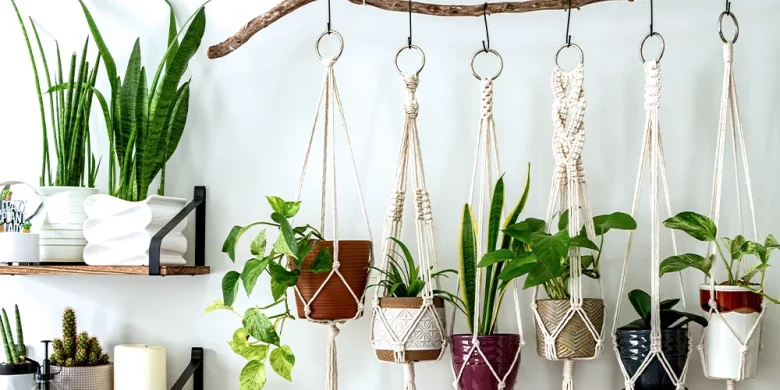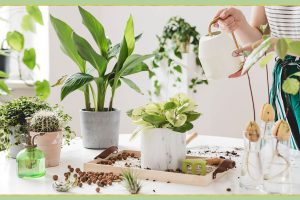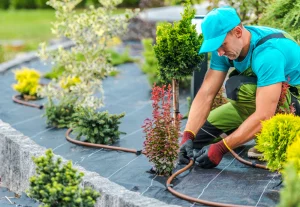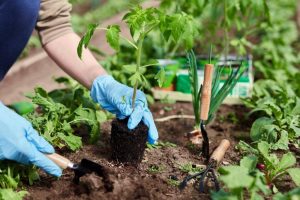Houseplants are more than just decorative elements; they are life companions that breathe life into your home or office. However, their beauty and vitality depend on your care. In this houseplant care guide, we explore the secrets to keeping your houseplants healthy and lush, transforming your space into a lush oasis.
Benefits of Houseplants
Before we delve into plant care, let’s take a look at the many benefits of having houseplants:
- Improve air quality: Houseplants act as natural air purifiers, removing toxins and increasing oxygen levels. This gives you cleaner, fresher air and a healthier environment.
- Reduces Stress: The presence of greenery has been shown to reduce stress levels, improve mood and increase productivity. Houseplants can create a calm, peaceful atmosphere.
- Aesthetic Appeal: Houseplants add an element of beauty and style to any room. They are available in different shapes, sizes, and colors, allowing you to personalize your space.
- Moisture Regulation: Some houseplants release moisture that helps maintain optimal indoor humidity, which is especially beneficial during dry seasons.
Now that we understand the benefits, let’s dive into the basic care tips to ensure your houseplants thrive.
1. Choose the Right Plants
Choosing the right houseplant is crucial for its long-term health. Consider factors such as the amount of light your space receives, your climate, and the hours you have available for care. Some options for beginners include:
- Snake Plant (Sansevieria): These plants are resilient and can tolerate low light conditions.
- Spider Plants (Chlorophytum): They are known for their air-purifying properties and thrive in indirect sunlight.
- Pothos (Epipremnum aureum): These vines are virtually indestructible and can grow in a variety of lighting conditions.
2. Provide Sufficient Light
Good lighting is essential for plant growth. Most houseplants fall into one of three categories when it comes to light requirements:
- Plenty of light: These plants need a few hours of direct sunlight every day. Examples of this are succulents and cacti.
- Medium-light: These plants thrive in bright, indirect light. Common choices include philodendron and peace lily.
- Low Light: This type of plant can thrive in minimal natural light. As previously mentioned, snake plants and pothos are excellent choices.
3. Water Wisely
Overwatering is a common mistake when caring for houseplants. Make sure you know your plant’s specific water needs and allow the soil to dry out slightly between waterings. In general, it is better to be underwater than above water. Well-drained saucer pots can help prevent root rot.
4. Ensure Good Humidity
Houseplants often require higher humidity than our homes naturally provide. You can increase the humidity by spraying the leaves, using a humidity tray, or placing a humidifier nearby.
5. Good Fertilization
Houseplants benefit from regular fertilization, especially during the growing season (spring and summer). Use a balanced, water-soluble fertilizer and follow package directions to avoid over-fertilizing.
6. Prune and Repot if Necessary
Pruning dead or yellowing leaves can promote new growth. Also, repot when the plant outgrows the container or becomes root-restricted.
7. Check Regularly for Pests
To keep your houseplants healthy, keeping an eye out for pests is crucial. Common pests include spider mites, aphids, and whiteflies. If you notice any signs of infection, take action immediately. Isolate affected plants and remove pests by hand or by lightly spraying them with soapy water, and consider using organic pesticides if necessary.
8. Rotate Plants
To ensure even growth and prevent plants from tilting toward the light source, rotate them regularly. This practice ensures that all sides of the plant receive adequate light, which promotes even growth and a balanced appearance.
9. Pay Attention to the Temperature
Most houseplants thrive at normal room temperatures, but some may have specific requirements. Avoid exposing plants to extreme temperature changes, drafts, or direct heat sources such as radiators or air conditioners.
10. Know your Plants
Each houseplant has its own unique properties and care requirements. Take the time to research and understand the specific needs of your plants. With this knowledge, you can tailor your care routine for optimal results.
11. Support Growth with Posts and Trellises
For climbers or climbers such as ivy, pothos, or philodendron, providing stakes or trellises can support growth and keep them looking tidy. Use soft plant ties to gently tie the vines to the stakes to prevent damage to the plants.
12. Practice Playing Cards
Indoor gardening is a journey that requires patience. Remember that plants don’t grow overnight. Be patient and let your green companion bloom at its own pace. Celebrate every new leaf and sign of growth as a small victory.
Conclusion
All in all, growing houseplants is a satisfying and rewarding hobby that not only enhances the beauty of your space but also helps create a healthier, more vibrant environment. By following these care guidelines and adapting to the needs of your plants, you will develop a green thumb and create an oasis of natural beauty in your home or office.
So go ahead, embrace the world of indoor gardening, watch your significant other blossom, and bring the beauty of nature indoors for you to enjoy all year round.
FAQs
1. How often should I water my houseplants?
The frequency of watering depends on the type of plant, the potting mix, and environmental factors such as humidity and light. In general, it is best to let the top inch or two of soil dry before watering. Check the soil moisture with your finger. Be sure to water thoroughly to allow excess water to drain from the pot and empty the saucer underneath to prevent root rot.
2. Can houseplants use tap water?
Tap water is generally suitable for most houseplants. However, some plants are sensitive to chemicals in tap water, such as chlorine and fluoride. To make tap water more suitable, you can leave it for a day or use a water filter to remove impurities. For sensitive plants, consider using distilled water or rainwater.
3. How do I know if my houseplants need to be repotted?
When a plant becomes root-bound, meaning the roots have outgrown the container, it is time to repot. Signs include roots sticking out of drainage holes, slow growth, and the plant becoming top-heavy. Repot into a container 1-2 inches larger in diameter using fresh potting mix.
4. What is the best fertilizer for houseplants?
A balanced water-soluble fertilizer with an equal N-P-K ratio (nitrogen, phosphorus, and potassium) (such as 10-10-10 or 20-20-20) is suitable for most houseplants. Use the diluted solution every 4-6 weeks during the growing season (spring and summer). Be sure to follow the instructions on the package for proper use.
5. How to rejuvenate dead houseplants?
If your plant is wilting, it could be a sign of an underwatering or root problem. Check the soil moisture and associated water. If the soil is consistently wet and wilting, consider repotting to check the root system for problems such as root rot. Prune out damaged roots and replant them in fresh soil.



